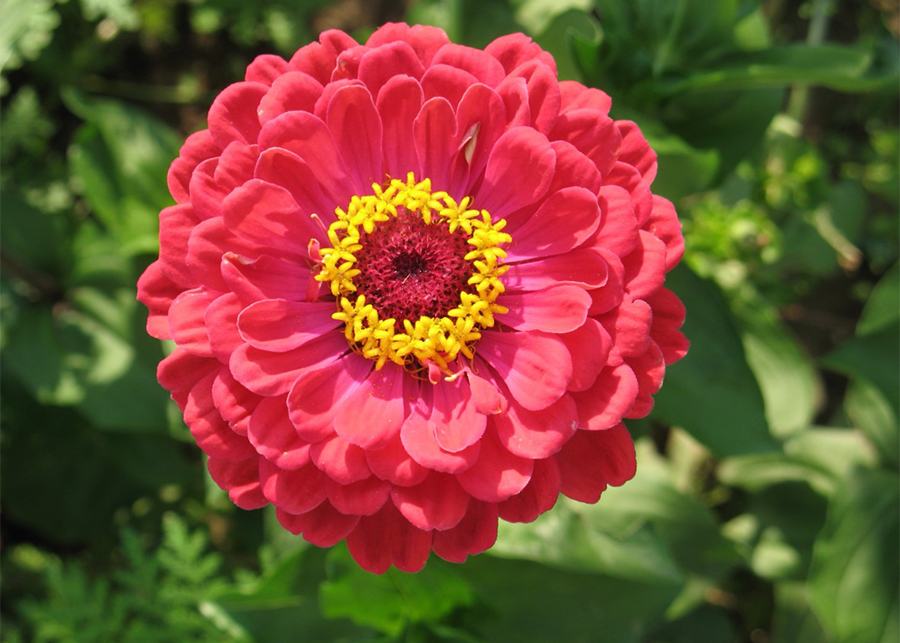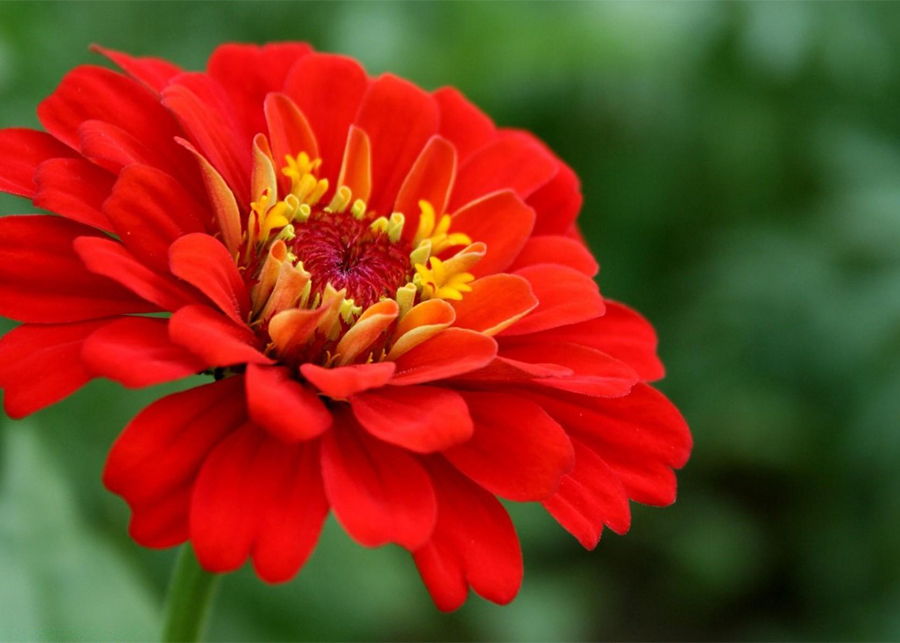
You have probably seen these colorful flowers at the grocery store, garden center and online. Zinnias are popular for summer planting for their bright, cheerful blooms that come in many different hues. If you have ever wondered about Zinnia flower care and meaning, you’ve come to the right place. Find out how to take care of your plants and learn about the meaning of each flower color. You’ll also find out when to bloom your Zinnias for the most beautiful displays.
If you have ever wondered about Zinnia flower care and meaning, you’ve come to the right place. Find out how to take care of your plants and learn about the meaning of each flower color. You’ll also find out when to bloom your Zinnias for the most beautiful displays. Learn all the facts about the flower, from where to buy it to what you can do to enjoy its beauty.

Zinnia flower care and meaning
Learn all you can about zinnia flowers and plant care. It grows best in full sunlight and tolerates low temperatures, but can’t survive frost. Plant them in a sunny spot, and they will bloom throughout the spring and summer. They need regular watering and fertilizer, and bloom until October. Plants can be grown as annuals, and their flowers attract butterflies and hummingbirds.
The petals of a zinnia are edible, although they lack any flavor or medicinal value. Many people enjoy picking petals from zinnia plants for garnishing. The flowers also are not toxic to children and pets and attract a wide variety of pollinators. The flowers also have a special meaning in their native range, and the petals represent joy, wealth, friendship, and a sense of virility.
Zinnia care
Several different species of zinnia flowers have been cultivated, making them easy to grow. They were originally twenty different varieties, but since the 18th century, these flowers have been crossbred to form numerous varieties. They usually grow best when planted from seed. They thrive in rich, well-drained soil and reseed themselves. They’re durable plants and can grow multiple colors. Listed below are some of the most common colors and how to care for your zinnias.
Despite their widespread popularity, the zinnia flower’s name has a very interesting history. This flower was once considered unattractive and ugly, and was given the name “mal de ojos” by the Spanish in Mexico. The flower was not known as an ornamental until the 19th century, but its common name, “garden Cinderella”, suggests that the flower has undergone a transformation from being an ugly, drab eye-sore to an elegant and dazzling bloom.
Zinnia flower meaning
The significance of zinnia flowers is well known. Though this flower is widely used as a cut flower, it has symbolic meaning. They symbolize happiness, friendship, endurance, and lasting love. In addition to these, they are often laid at the grave of a loved one to express the feelings of their heart. If you want to give a flower to a loved one who has passed on, consider sending a yellow variety.
The Aztecs named the zinnia plant mal de ojos, which means “eyesore.” Although it is a simple plant, it has a symbolic meaning, and it’s important to remember its origin. The flower was named for Johann Gottfried Zinn, a German botany professor who first discovered it in the 1700s. After his discovery, it spread throughout Europe and became widely popular, and today, it is a favored plant of gardeners around the world.

Zinnia colors
The meaning behind the zinnia flower is varied. While this annual is used to celebrate friendship and new success, it also has a long history of symbolic meaning. Victorians, for example, used zinnias to communicate messages. Hence, zinnia care and meaning is important for flower enthusiasts. Listed below are some common flowers and their meanings. To learn more about their meaning, read on.
A zinnia flower is about 3 inches wide and grows about 2 feet tall. It starts out a vivid magenta- pink color but ages to a deep ruby red. The flower is a favorite among gardeners and is an excellent plant to grow. After the flower has been dried, the seed head is detached from the plant. The seedhead is a delicious edible treat, and the petals contain a delicate taste of peach.
Does Zinnia come back every year?
The answer is yes. This perennial flower produces seeds. Seeds are small and are classified as ray florets. They are easy to separate from the spent flower head. When the seeds mature, they resemble tiny arrowheads. In autumn, they fall to the ground and germinate. You can save them for next year. To collect the seeds, simply knock over the spent flower head on a piece of paper.
You can harvest the seeds from your zinnia plants. The seeds are a viable source of food. Once harvested, they will produce a new crop of flowers. However, the flowers of the plant will not bloom every year. You can save the seeds to grow new plants in the spring. The best time to plant zinnias is in early May or June. Make sure that the nights are warm enough to sit outside and enjoy the bloom.
Zinnia Flower Care and Meaning Result
Zinnia flowers are widely used as a cut flower, yet have much more meaning than that. These flowers symbolize happiness, friendship, endurance and lasting love. Zinnias are often laid at the graves of loved ones to express appreciation and respect.
